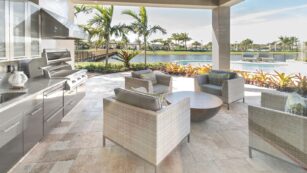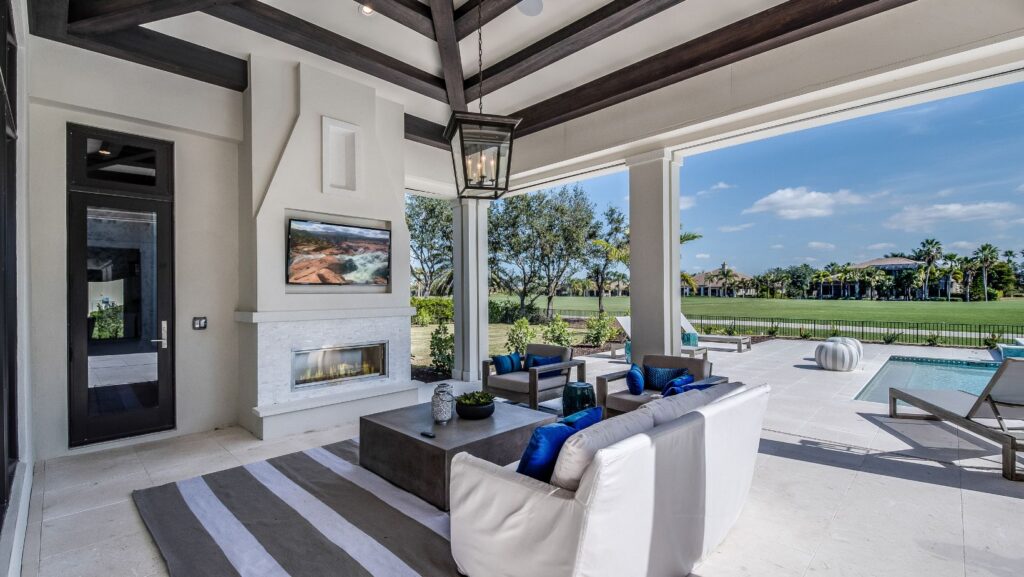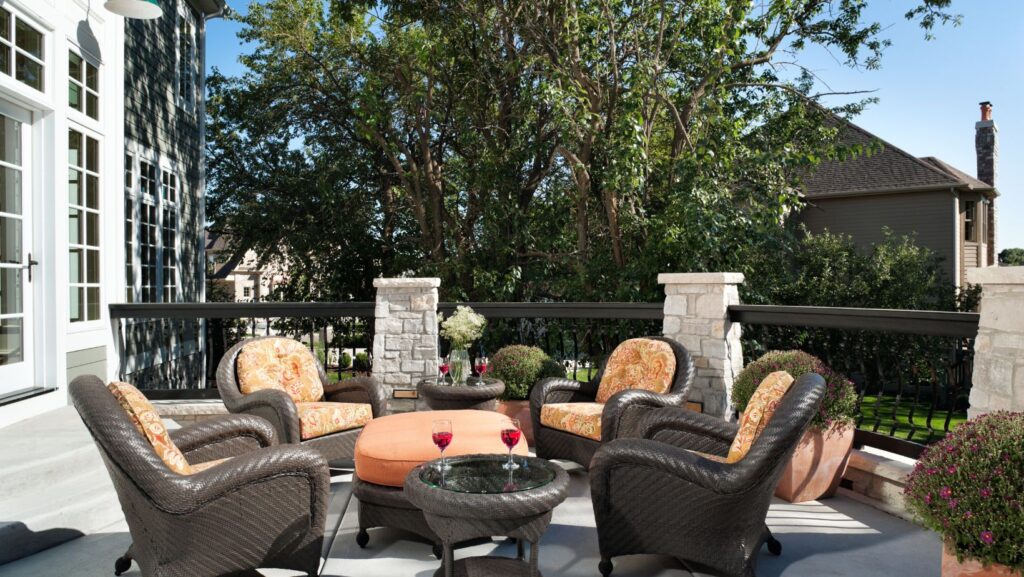Enclosed Outdoor Living Spaces
In modern home designs, enclosed outdoor living spaces occupy an undeniable space. Their rise in popularity testifies to their ability to create a cozy environment all year long, following the comfortable and stylish extension of indoor living into the outdoors.
Benefits of Enclosed Outdoor Spaces
 Enclosed outdoor spaces bring a slew of perks to homeowners’ doorstep. Firstly, they serve as a primary bridge between indoor comfort and outdoor freedom, allowing families to relish the ambient outdoor conditions without worrying about weather anomalies or pests. For instance, one can enjoy a rainy afternoon without getting wet or a warm summer evening without those pesky mosquitoes.
Enclosed outdoor spaces bring a slew of perks to homeowners’ doorstep. Firstly, they serve as a primary bridge between indoor comfort and outdoor freedom, allowing families to relish the ambient outdoor conditions without worrying about weather anomalies or pests. For instance, one can enjoy a rainy afternoon without getting wet or a warm summer evening without those pesky mosquitoes.
Furthermore, these spaces add substantial value to homes. They not only augment the living area but also aesthetically enhance the overall appearance of the house, improving the “curb appeal”. Also, should the homeowners decide to sell, an enclosed outdoor living space potentially increases property value, making it a lucrative investment.
Common Types of Enclosures
There’s a broad spectrum of enclosed outdoor living spaces, catering to varied homeowners’ needs and tastes.
Screened porches, a popular type, allow for an open-air feeling while providing protection from insect intrusions. They are ideal for homes situated in areas abundant with bugs and mosquitoes.
Garden rooms encapsulate the home’s garden or green space within its walls. They present the chance to delight in the garden’s charm during unfavorable weather conditions.
Outdoor kitchens, as their name suggests, extend the cooking area to the exterior of the home. Cooking and conversations meet, creating a jovial atmosphere for gatherings.
Designing Your Enclosed Outdoor Living Space
Planning the Layout
 When planning an enclosed outdoor living space, one of the initial steps involves creating a layout that optimizes the square footage available. These spaces, often designed to expand indoor living into the outdoors, must integrate seamlessly into the existing architecture. For instance, a garden room might sit in a corner of a backyard, maximizing the use of the existing landscape while maintaining functional access to the rest of the house and yard.
When planning an enclosed outdoor living space, one of the initial steps involves creating a layout that optimizes the square footage available. These spaces, often designed to expand indoor living into the outdoors, must integrate seamlessly into the existing architecture. For instance, a garden room might sit in a corner of a backyard, maximizing the use of the existing landscape while maintaining functional access to the rest of the house and yard.
Both the size and shape of the enclosed space largely depend on its intended use. For example, outdoor kitchens require a more linear layout, complete with ample counter space and room for appliances. On the contrary, solariums geared towards relaxation or leisure may favor a more open, circular floor plan. Against each predictability, there lie intrinsic factors such as personal preferences and the relative position of the sun.
Don’t forget about passageways, either. The position and size of doors, windows, and other openings dictate the pedestrian flow within the area. It affects how people interact with the space and facilitates its dual role as an original part of the house, as well as its year-round accessibility.
Furniture and Decor Choices for Optimal Comfort
 A successful transition from concept to reality in creating enclosed outdoor living spaces involves the right selection of furniture and decor. Not merely a seat, they become the stage that sets a welcoming tone. Outdoor furniture includes items like chairs, tables, sofas, and loveseats, while decor ranges from rugs and cushions to decorative planters, lighting fixtures, and wall arts.
A successful transition from concept to reality in creating enclosed outdoor living spaces involves the right selection of furniture and decor. Not merely a seat, they become the stage that sets a welcoming tone. Outdoor furniture includes items like chairs, tables, sofas, and loveseats, while decor ranges from rugs and cushions to decorative planters, lighting fixtures, and wall arts.
Attractive, comfortable, and weather-resistant furniture lends an inviting atmosphere to the enclosure. Opt for durable materials like wrought iron, teak, or UV-resistant plastics, for lasting value. Choosing colors and patterns with mindfulness contributes to the aesthetic appeal.
Integrating Technology in Enclosed Outdoor Living Spaces
After planning the layout and defining the decor for enclosed outdoor living spaces, it’s pertinent to consider integrating technology. This infusion enhances the functionality and elevates the comfort of the spaces. Various technologies, specific to the use of the space, find relevance here. For instance, outdoor kitchens may benefit from smart grills and weatherproof appliances, while QR codes can be used to access appliance manuals or recipes. Similarly, solariums could integrate automated climate control systems to maintain optimal temperatures and sunlight levels.

